Dambulla Cave Temple: The Golden Temple of Sri Lanka
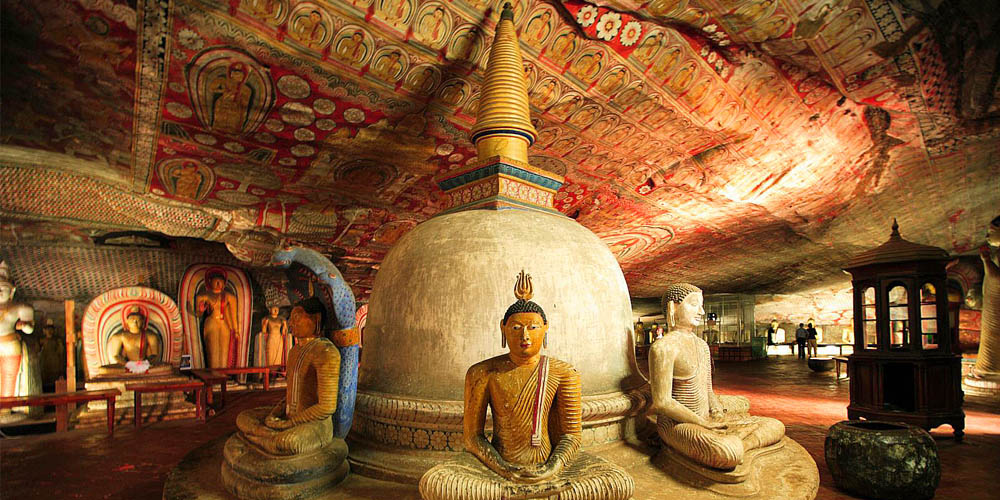
The Dambulla Cave Temple, also known as the Golden Temple of Dambulla, stands as one of Sri Lanka’s most spectacular cultural treasures and best-preserved cave temple complexes in Asia. Designated as a UNESCO World Heritage Site in 1991, this sacred Buddhist pilgrimage site has been a place of worship and artistic achievement for over two millennia.
Perched majestically atop a massive granite outcrop rising 160 meters above the surrounding plains, the temple complex commands breathtaking views of the central Sri Lankan landscape. Its elevated position has protected these sacred caves and their invaluable contents through centuries of history.
Ancient Origins and Royal Patronage
The cave temple’s origins date back to the 1st century BCE, when King Valagamba (Vattagamani Abhaya) sought refuge in these natural rock shelters during a period of exile. Upon reclaiming his throne, the grateful king transformed the caves into magnificent rock temples, establishing a tradition of royal patronage that would continue for centuries.
Subsequent monarchs, particularly King Nissanka Malla in the 12th century and the Kandyan kings in the 18th century, expanded and embellished the complex, adding new statues, paintings, and architectural features. This continuous patronage has resulted in a remarkable layering of artistic styles spanning over 2,000 years.
The Five Sacred Caves
The temple complex comprises five main cave shrines, each containing a unique collection of religious art and sculpture:
Cave I (Devaraja Viharaya – Temple of the King of Gods): Houses a 14-meter-long reclining Buddha carved from solid rock, depicting the Buddha’s entrance into parinirvana. The cave also contains statues of Ananda, the Buddha’s devoted disciple, and King Valagamba.
Cave II (Maharaja Viharaya – Temple of the Great Kings): The largest and most spectacular cave, measuring approximately 52 meters in width and 23 meters in depth. It contains 56 Buddha statues in various postures and an extraordinary gallery of ceiling and wall paintings covering approximately 2,100 square meters. These vivid murals depict scenes from the Buddha’s life, Jataka tales, and Sri Lankan Buddhist history.
Cave III (Maha Alut Viharaya – Great New Temple): Added during the Kandyan period in the 18th century, this cave features 50 Buddha images and elaborate wall paintings characteristic of the later artistic style.
Cave IV (Pachima Viharaya – Western Temple): A smaller shrine containing Buddha statues and a dagoba, with the central Buddha image seated under a makara torana (dragon arch).
Cave V (Devana Alut Viharaya – Second New Temple): The most recent addition to the complex, also from the Kandyan era, featuring reclining Buddha images and Hindu deities, reflecting the syncretic religious traditions of the period.
Artistic Masterpieces
The Dambulla caves contain over 150 Buddha statues in various sizes and postures—seated, standing, and reclining—many carved directly from the living rock. The comprehensive collection represents different periods and artistic styles, providing an unparalleled visual history of Sri Lankan Buddhist sculpture.
The extensive ceiling and wall paintings, executed using natural pigments, display remarkable preservation and artistic sophistication. These frescoes depict religious narratives with extraordinary detail and vibrant colors, showcasing the evolution of Sri Lankan painting traditions from ancient times through the Kandyan period.
Living Religious Site
Dambulla remains an active place of worship and pilgrimage, maintaining its spiritual significance for Buddhists worldwide. The temple complex continues to serve its original sacred purpose while welcoming visitors who come to marvel at its artistic and historical treasures.
The climb to the caves, though requiring moderate physical effort, rewards visitors with not only the spectacular temple interiors but also panoramic vistas of the surrounding countryside, including views of Sigiriya Rock in the distance.
Conservation and Cultural Significance
The Central Cultural Fund undertakes ongoing conservation efforts to preserve the delicate murals, statues, and rock structures from environmental damage and the effects of time. These efforts ensure that this irreplaceable cultural heritage remains accessible to future generations.
Dambulla Cave Temple represents a perfect synthesis of natural cave formations, artistic genius, and enduring religious devotion, making it an essential destination for understanding Sri Lanka’s rich Buddhist heritage and artistic traditions.
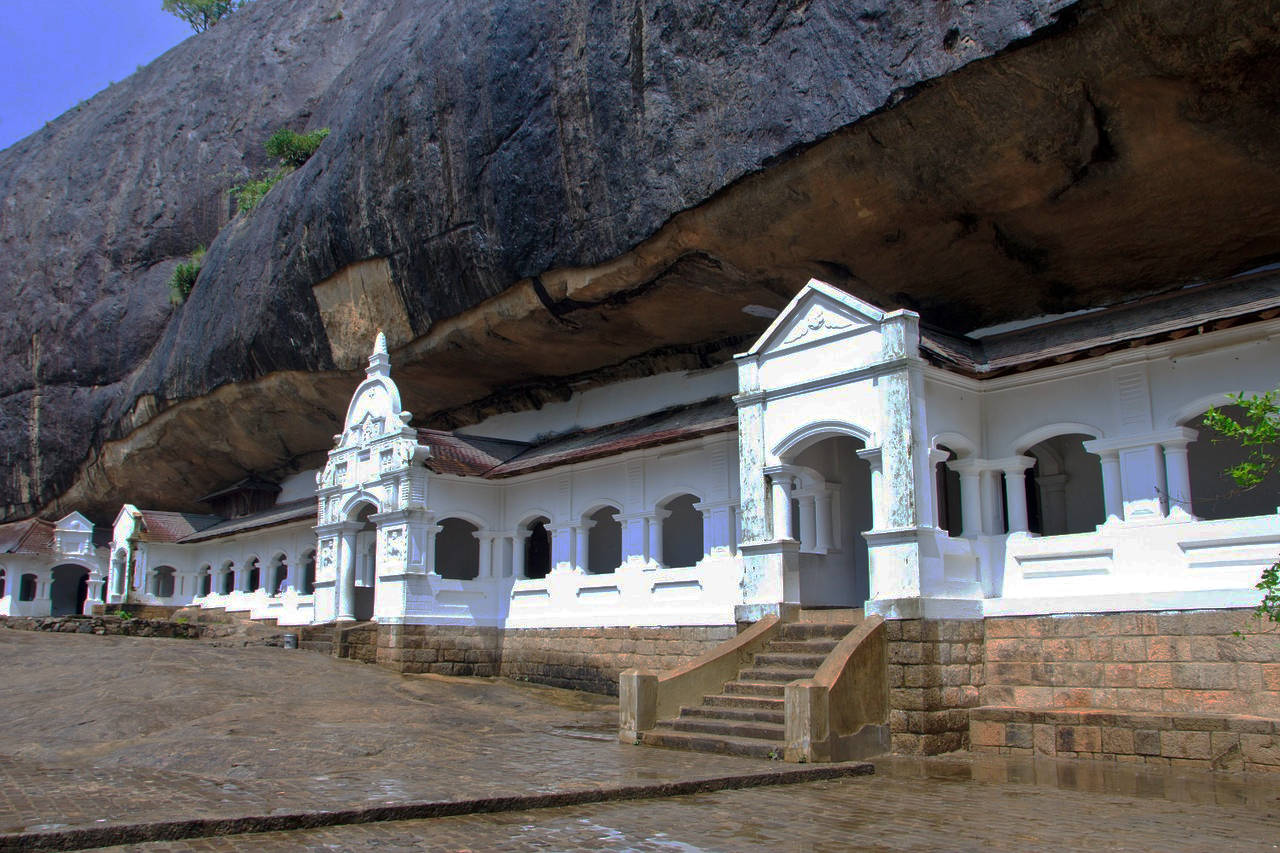
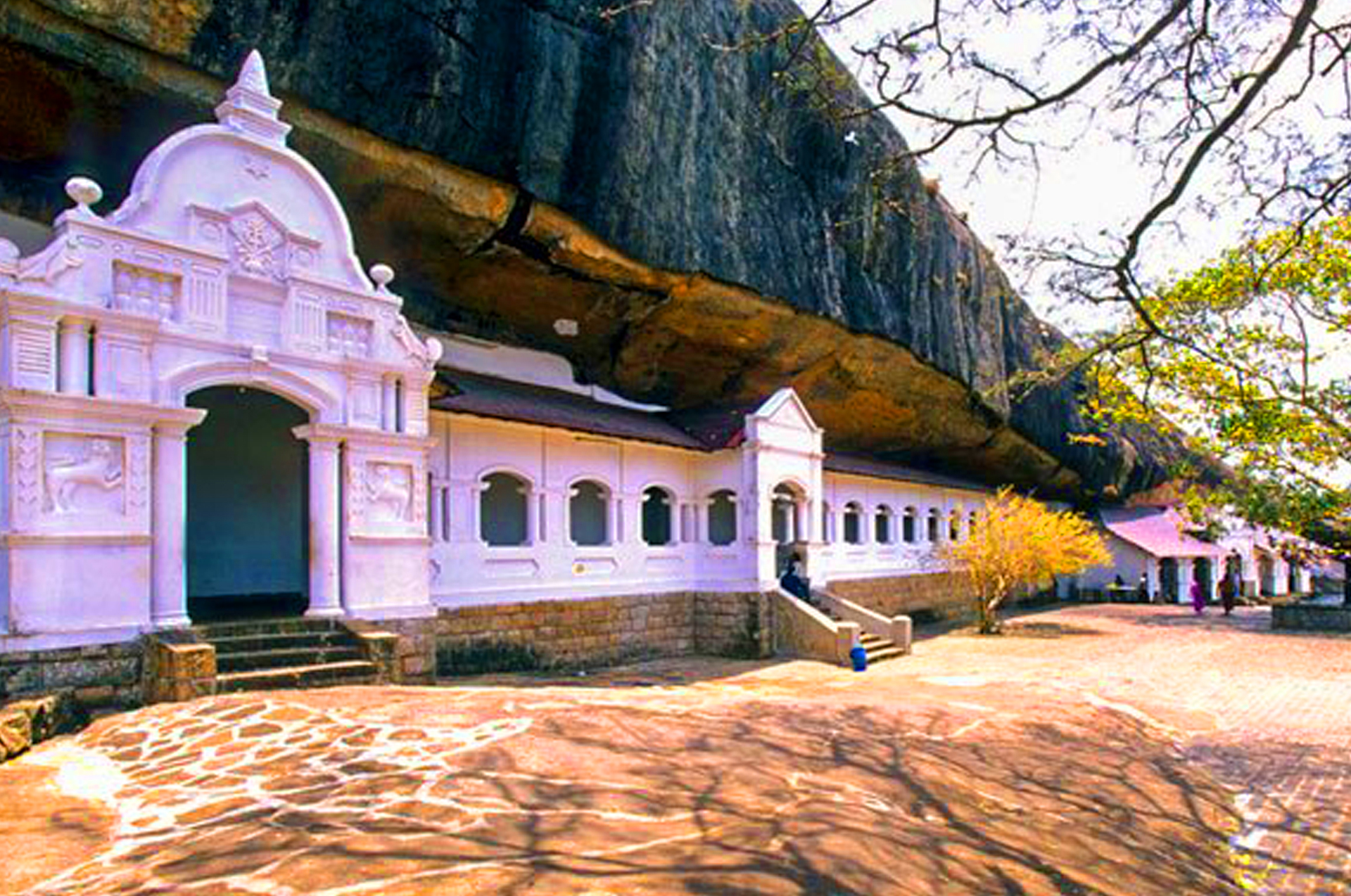
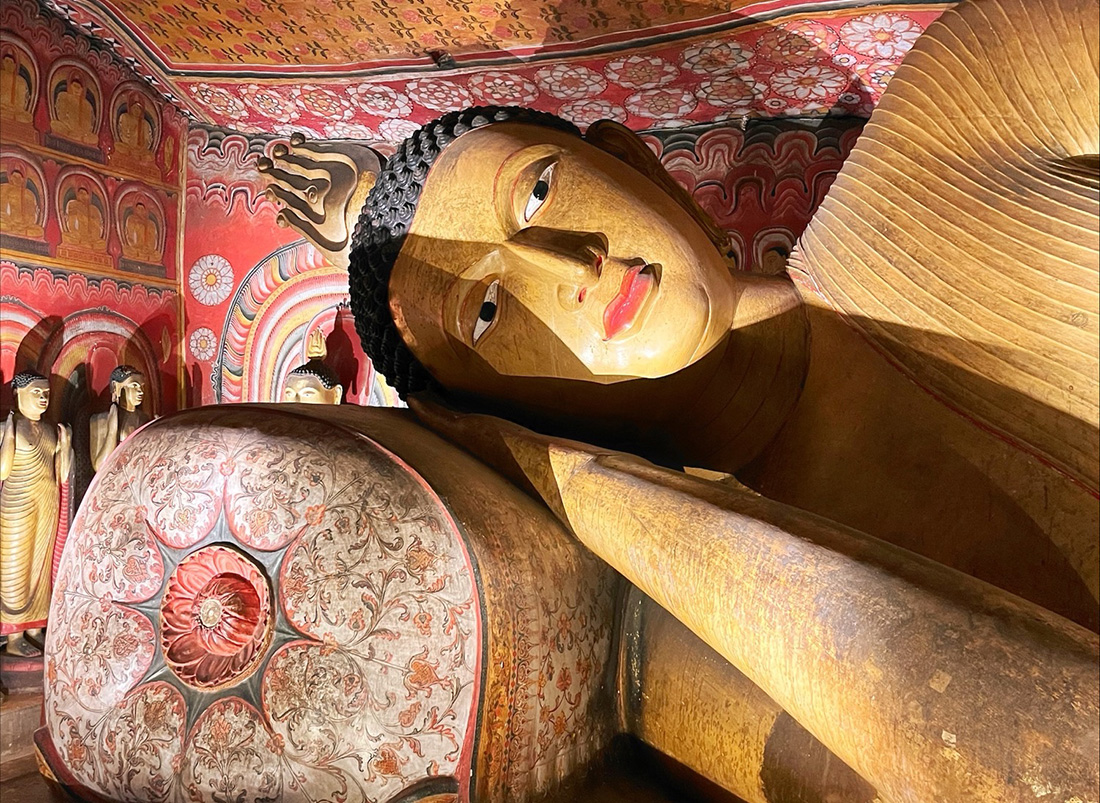
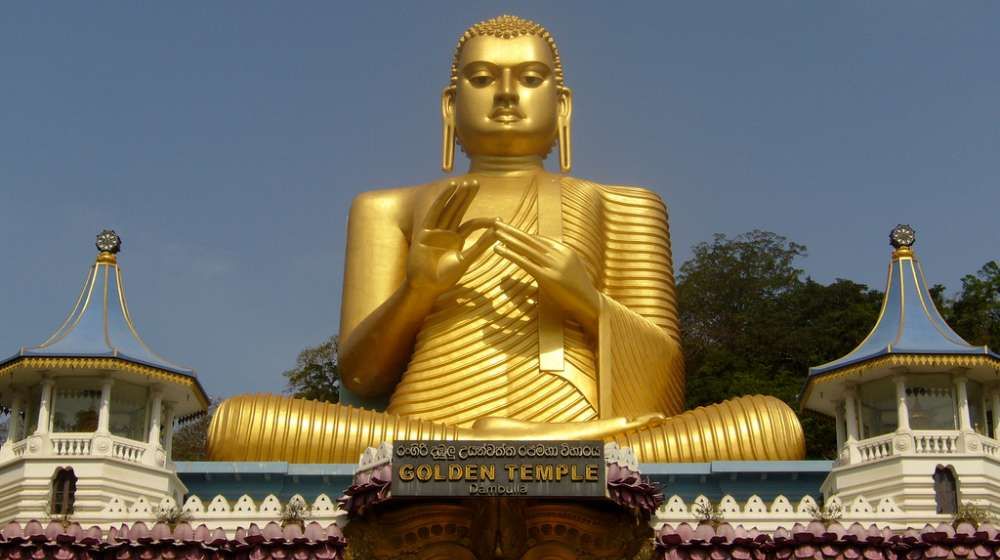
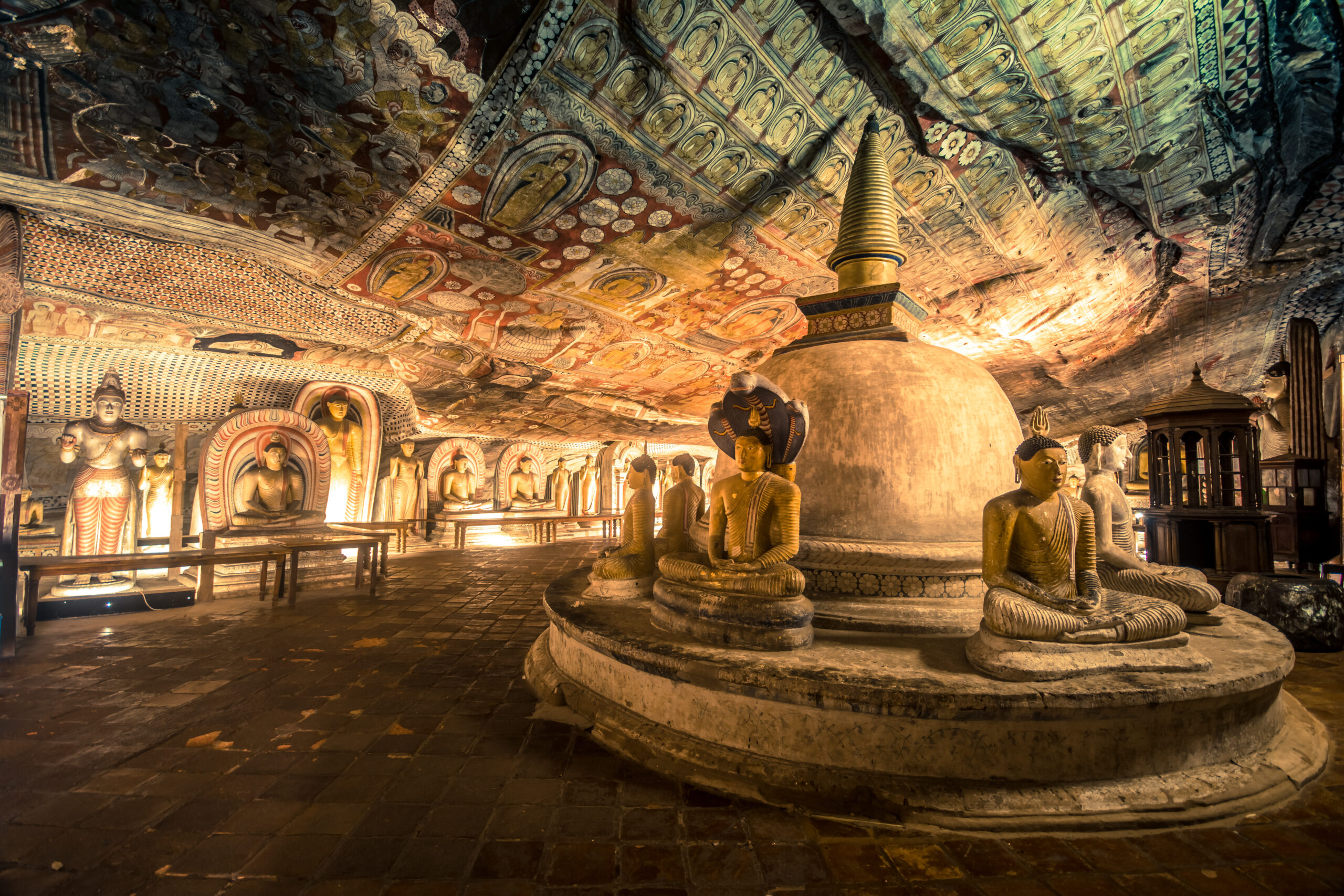
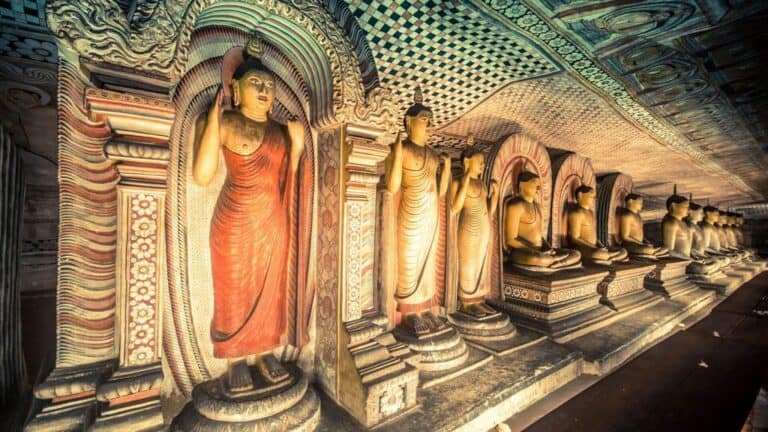
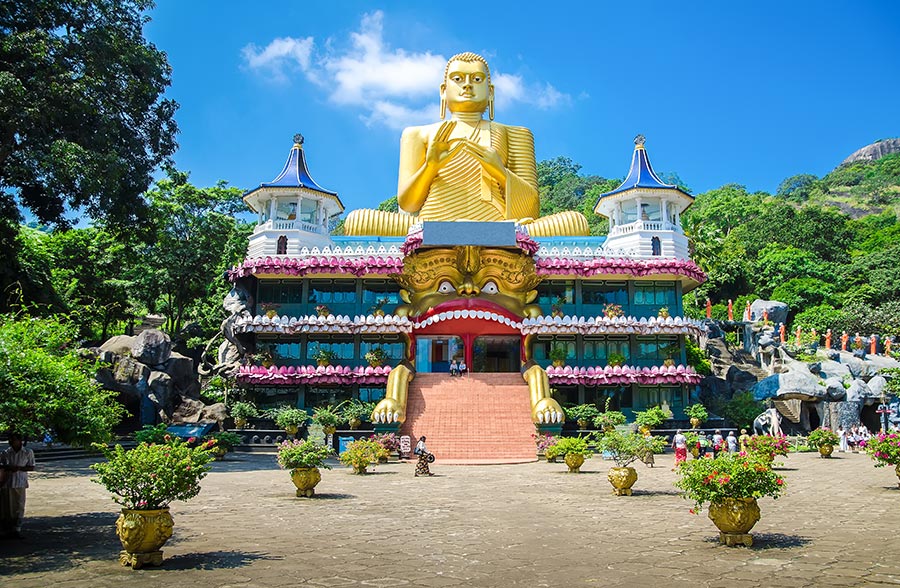
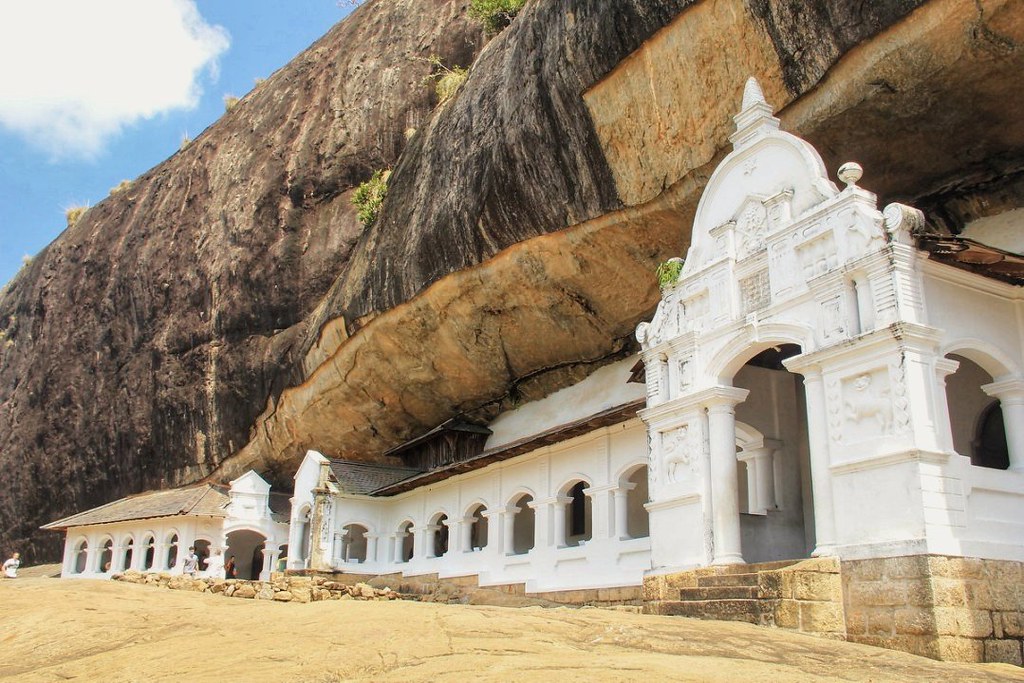
*Photo credits go to the respective owners
